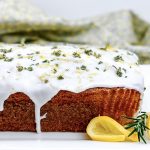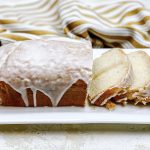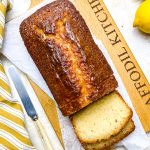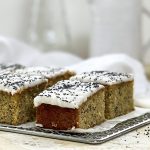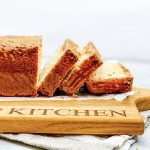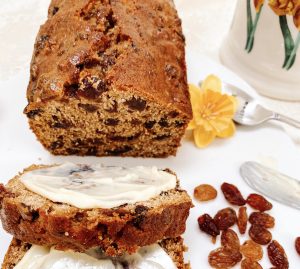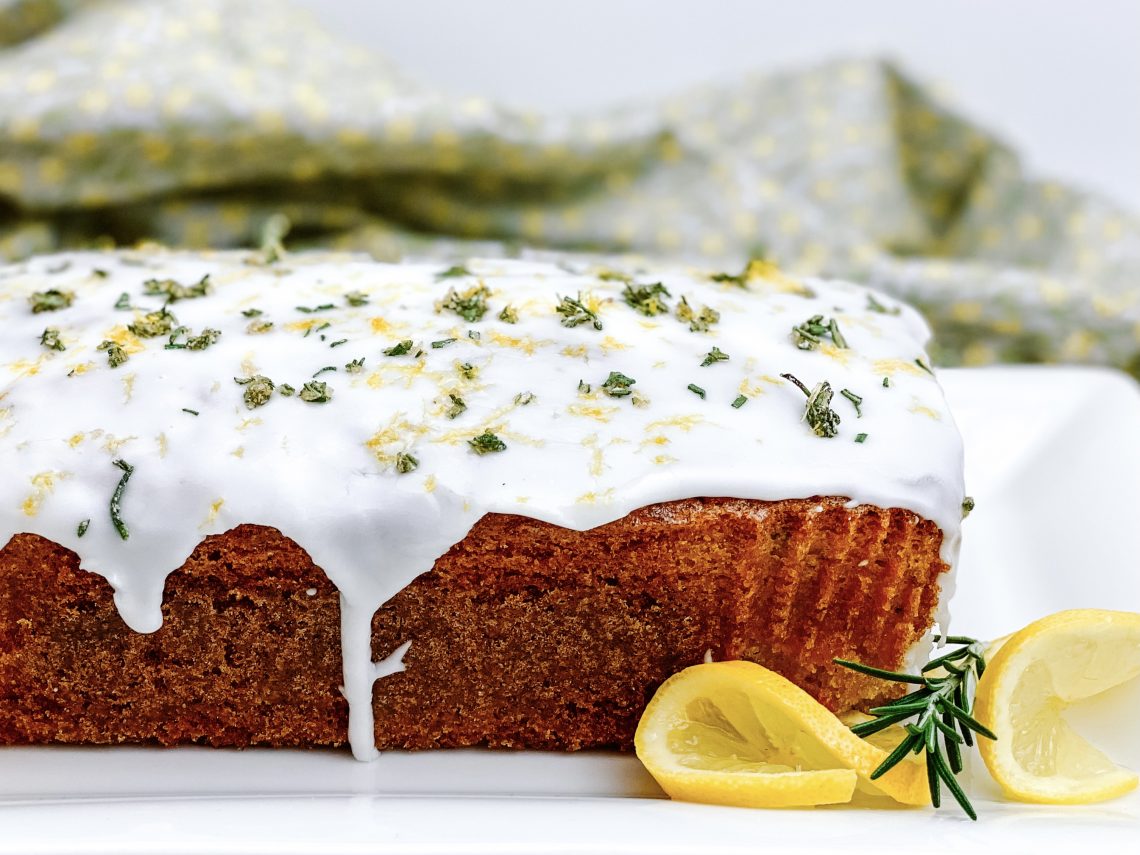
Lemon and Rosemary Drizzle Cake
Delicious, moist, light as a feather, lemon and rosemary sponge cake, drizzled in a lemon and rosemary syrup and topped with a sweet, delicious layer of icing. The fresh, zesty tang of a soft, luscious Lemon Drizzle Cake makes me think of spring and new beginnings and I think we are all looking forward to spring, coming out of lockdown and a new start. The aromatic, lemony-peppery finely chopped rosemary elevates this cake to a new level and we ate it with a smile on our face, delight on our tongue and a spring in our step.
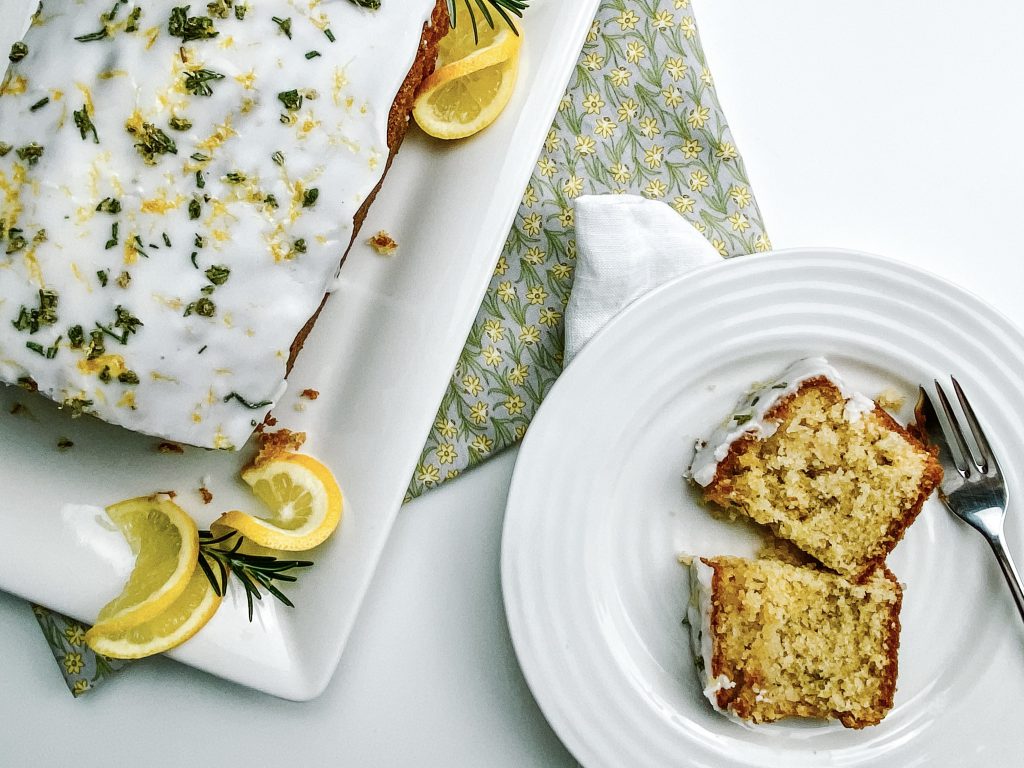
You’ve got to have enough lemon
I like my lemon cakes to properly taste of lemon – it is a lemon cake, not a ‘hint of’ lemon cake, after all! As such, I use more zest and juice than a lot of similar recipes. If you prefer a more gentle flavour, simply reduce the lemons to 1 or 1½.
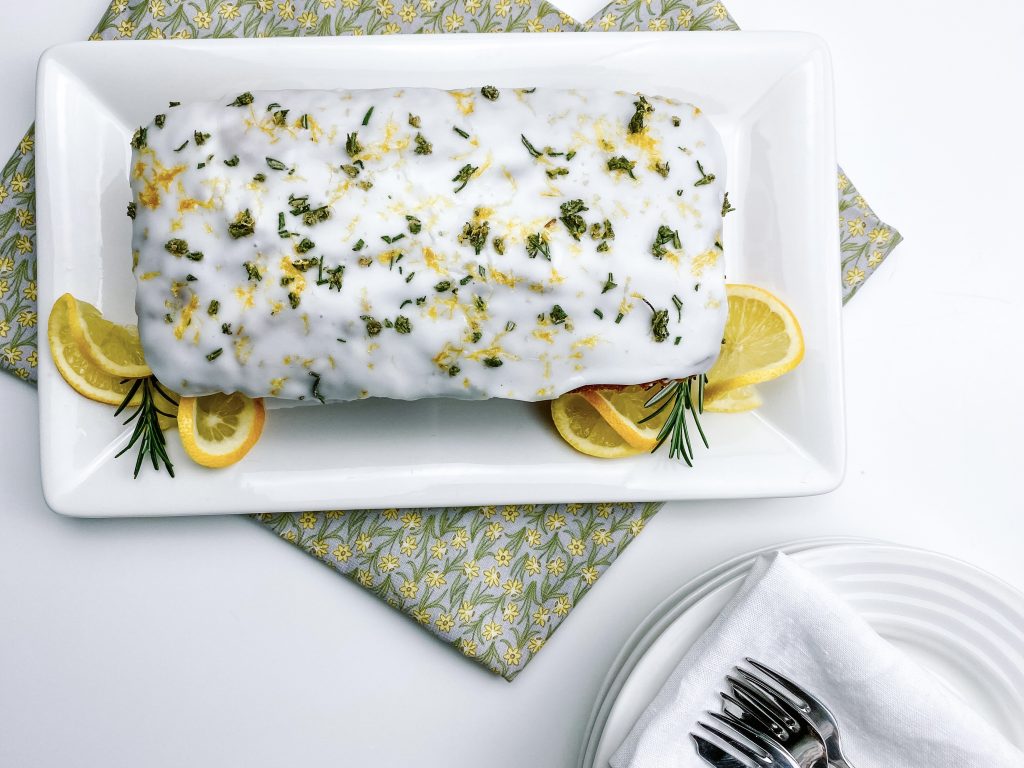
I’m thinking of one of Mr Daffodil’s lovely patients today as I post this cake. A couple of months ago she gave Andrew a pot of fabulous runny honey produced by her bees, some of which we ate with these Good Morning Muffins. This week she gifted us some set honey. It is properly delicious – thank you so much. I was going to use it in a recipe, but as soon as I tried it I knew I wanted to enjoy it in its purest form. Here it is on my homemade Kürbiskernbrot. This lovely lady has been making Daffodil cakes to share with volunteers at her local vaccination centre; here is another cake for you. I hope it makes you smile.
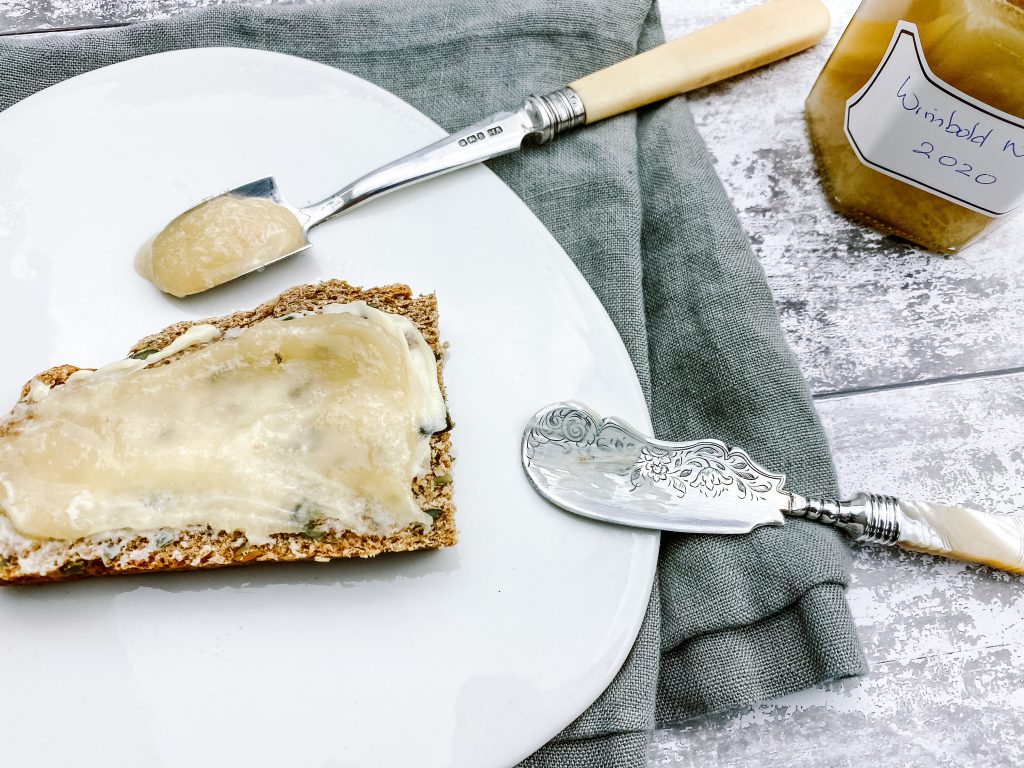
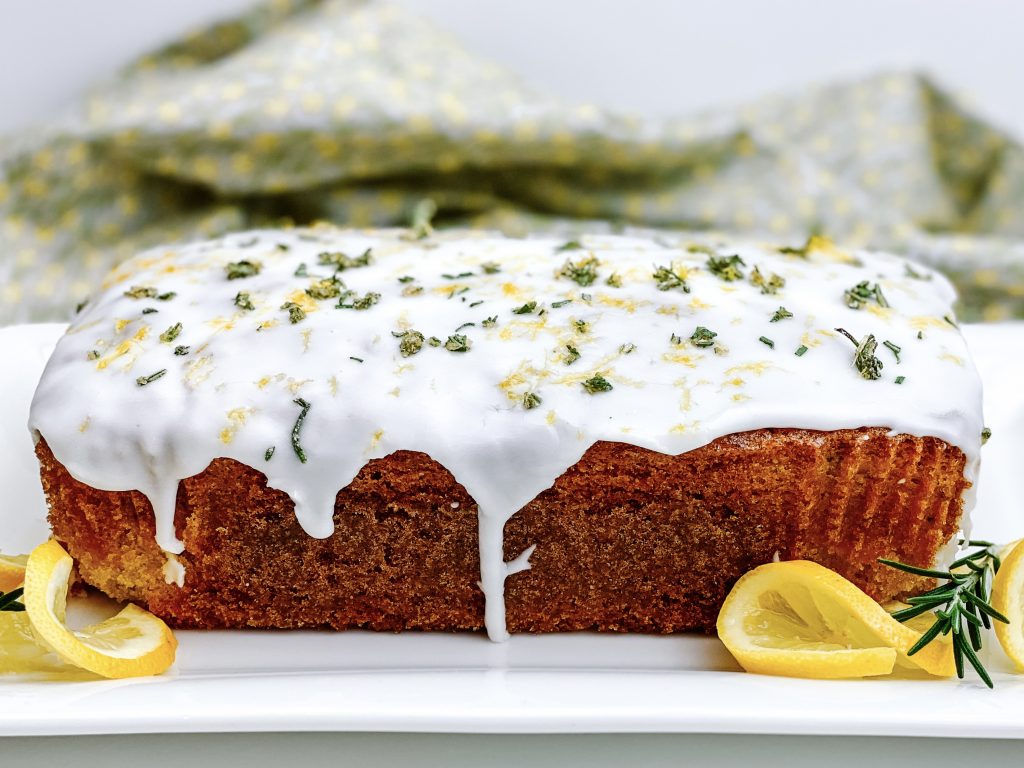
How to make Lemon and Rosemary Drizzle Cake
Collect all the ingredients together:
For the basic cake –
- unsalted butter, at room temperature
- caster sugar
- large eggs
- plain/all-purpose flour
- corn flour
- baking powder
- bicarbonate of soda
- vanilla extract
- fine salt
- sour cream
- Plus flavourings:
- grated lemon zest
- rosemary leaves, finely chopped
For the soaking syrup –
- lemon juice
- water
- caster sugar
- sprigs of rosemary
Sugared Rosemary –
- finely chopped fresh rosemary
- caster sugar
For the icing –
- lemon juice
- icing sugar
Decorate –
- sugared rosemary
- grated lemon zest
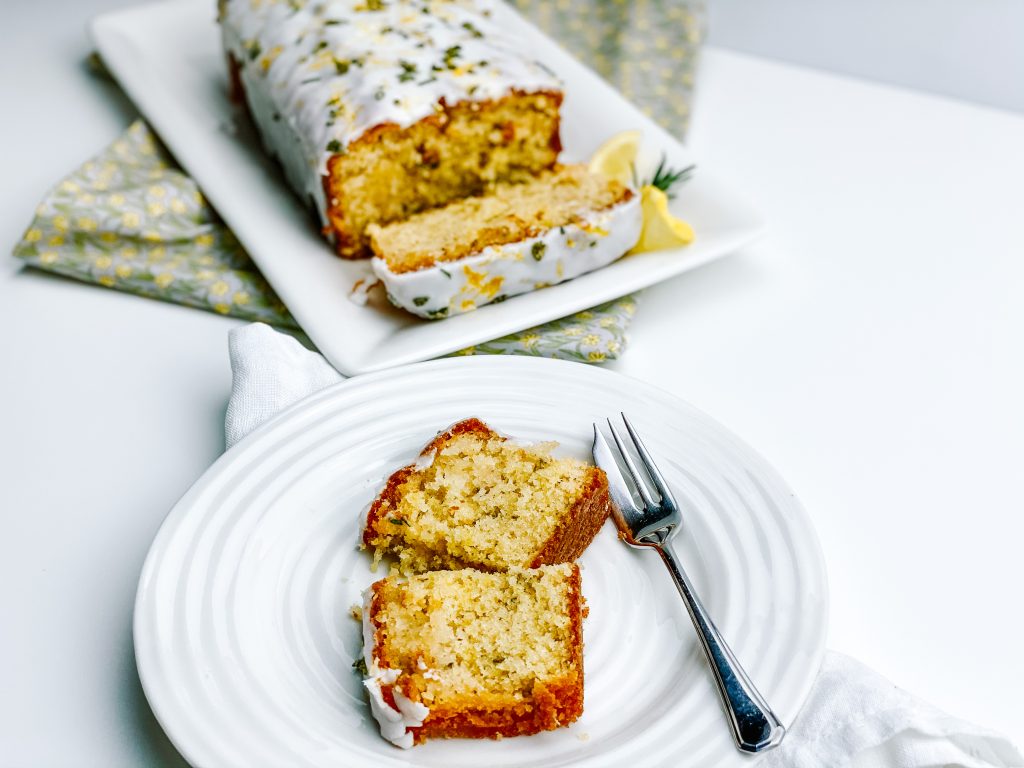
First make the sponge cake:
- Finely chop the rosemary needles.
- Use a fine grater to zest both of the lemons.
- It is important that the butter is at room temperature and soft enough to beat. If it is a little hard, beat it with a whisk before adding the other ingredients. If it is already quite soft, you do not need to do this.
- Measure all the remaining basic ingredients into the mixing bowl with the butter. I place my mixing bowl on top my scales and weigh everything in directly.
- Use an electric whisk to beat until combined. This should take less than a minute.
- Add the chopped rosemary and lemon zest and fold into the cake batter. Be careful not to over-mix at this stage.
- Tip into your lined baking tin and level the surface, ensuring the cake goes into all the corners.
- Bake in the centre of a preheated oven for 45 – 50 minutes until cooked.
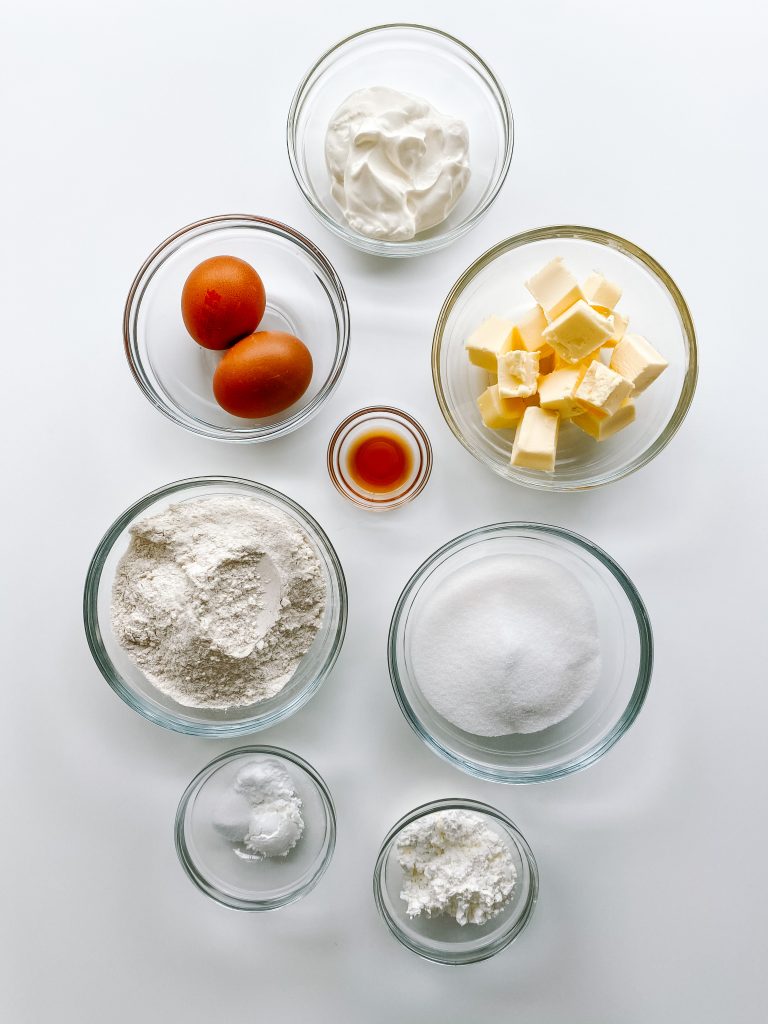
Basic cake ingredients 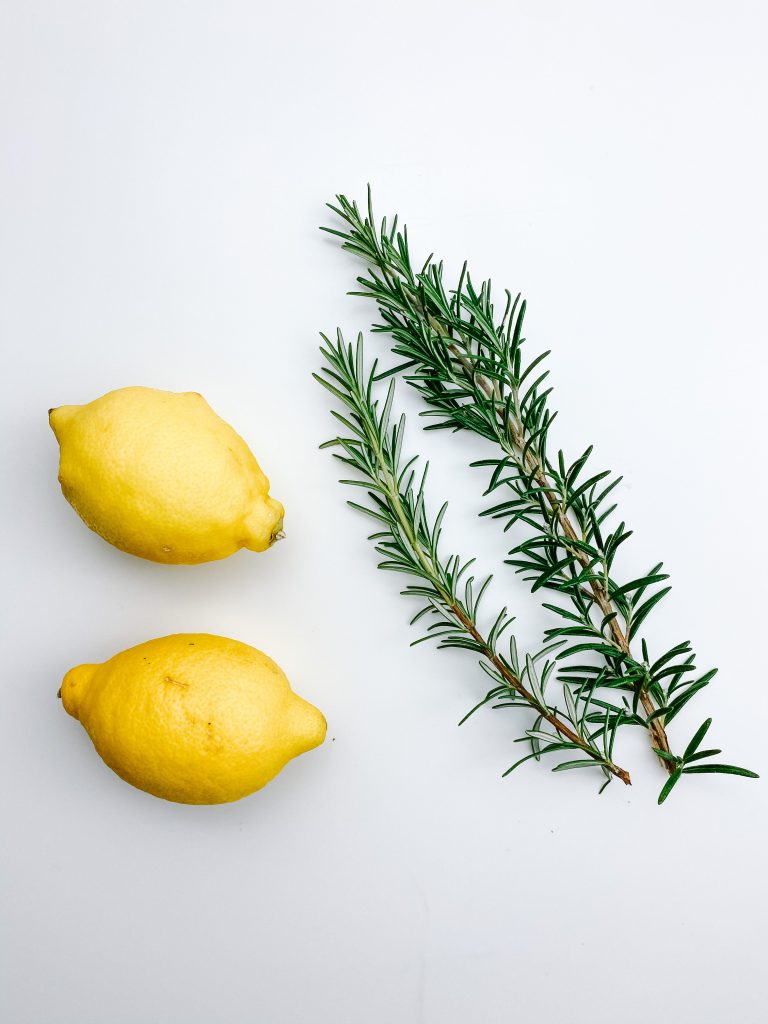
Additional ingredients 
1 Finely chop rosemary 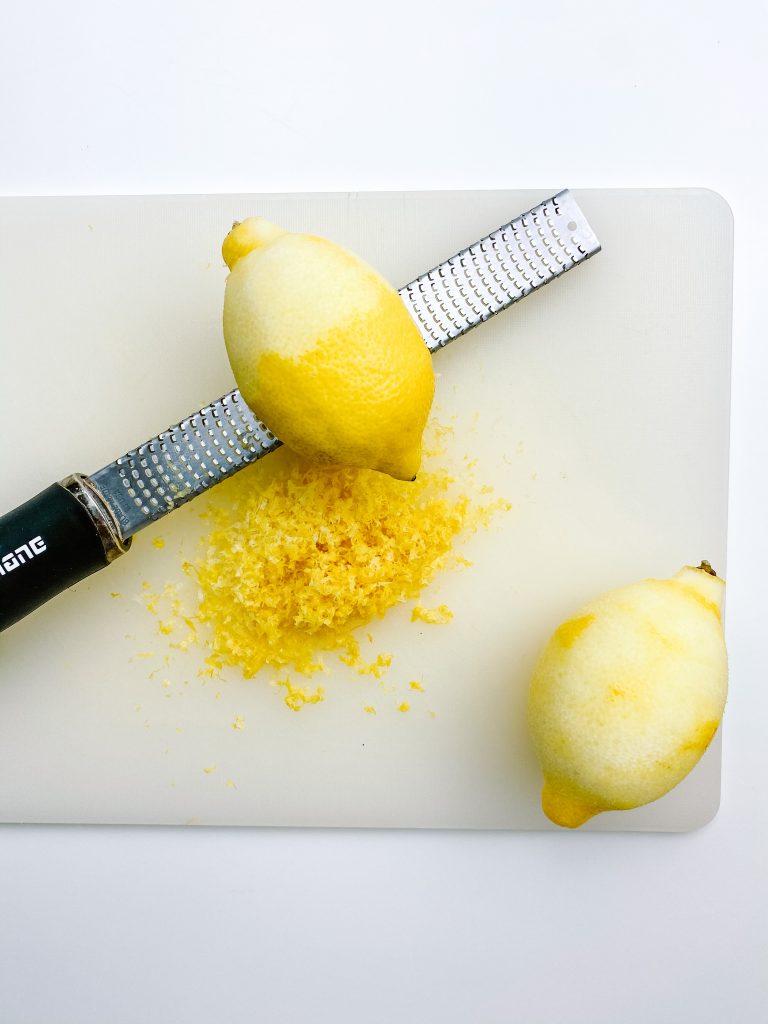
2 Grated zest of lemons 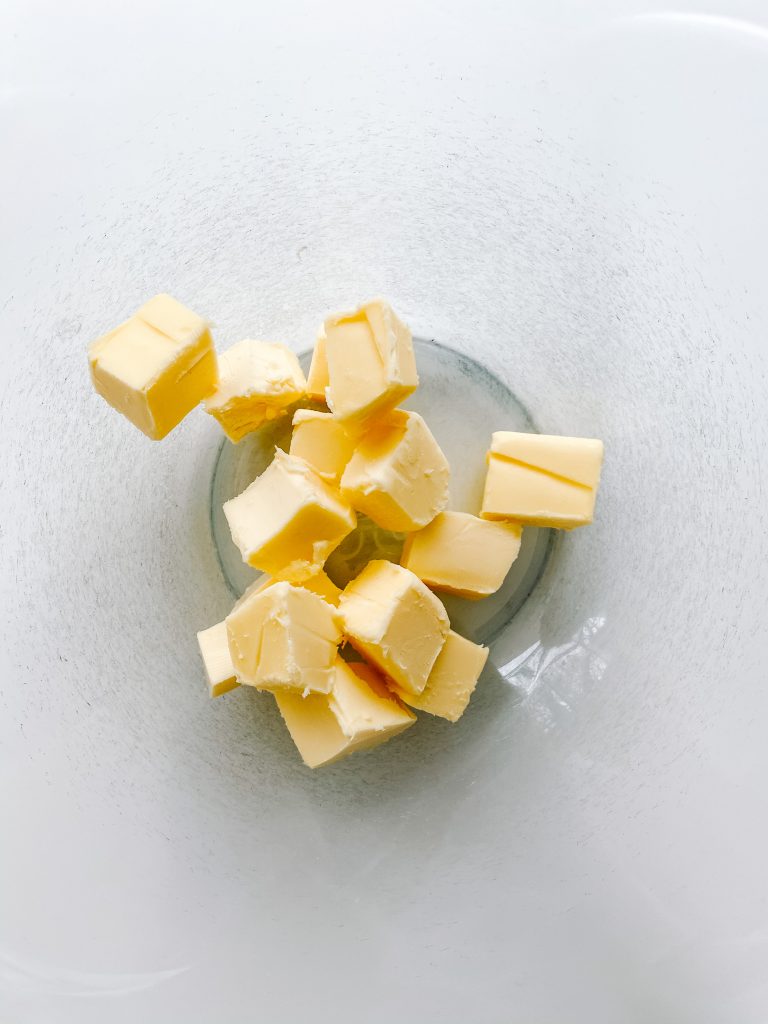
3 If the butter is a little hard, beat it … 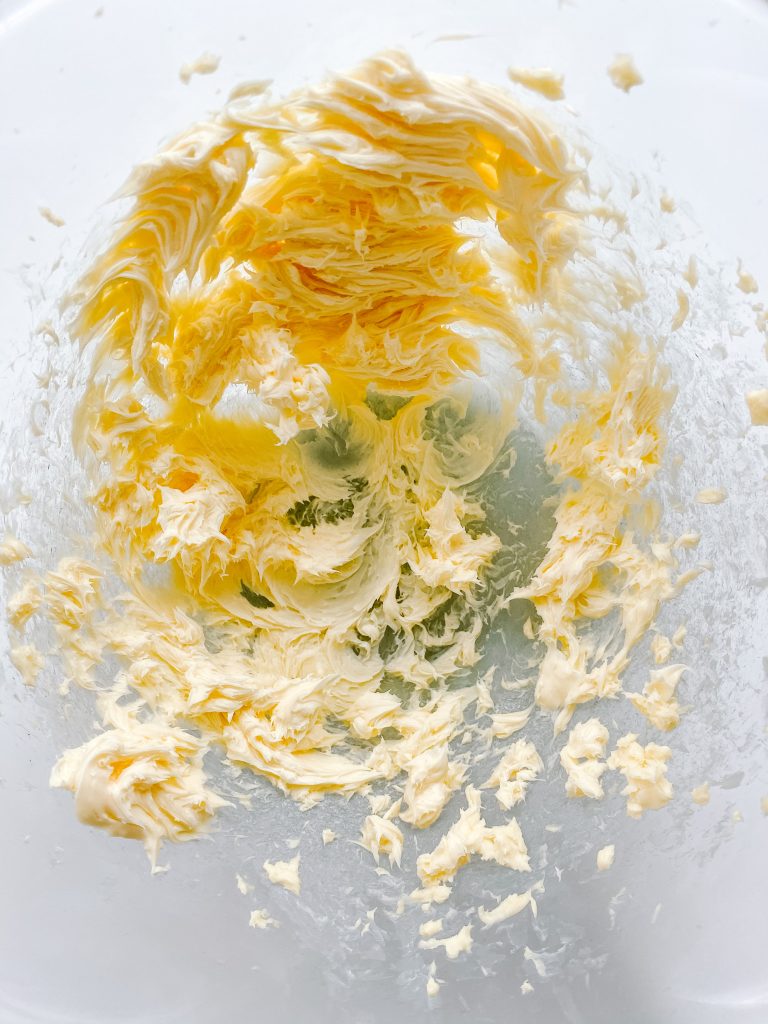
before adding the other ingredients. 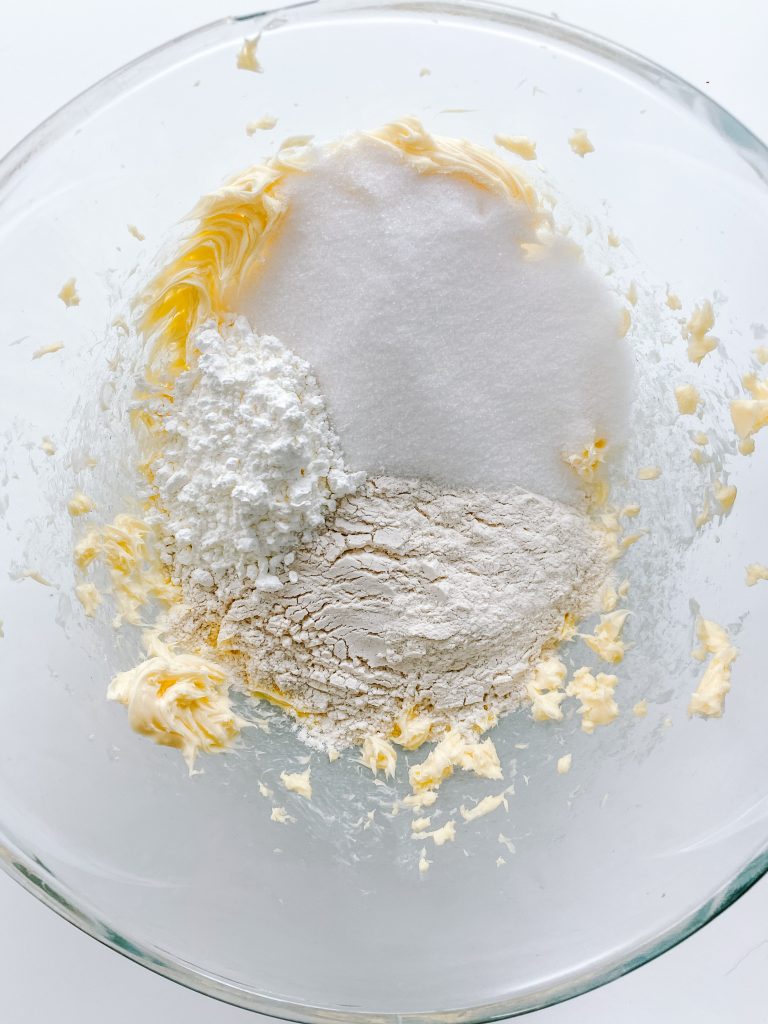
4 Add all the remaining basic ingredients 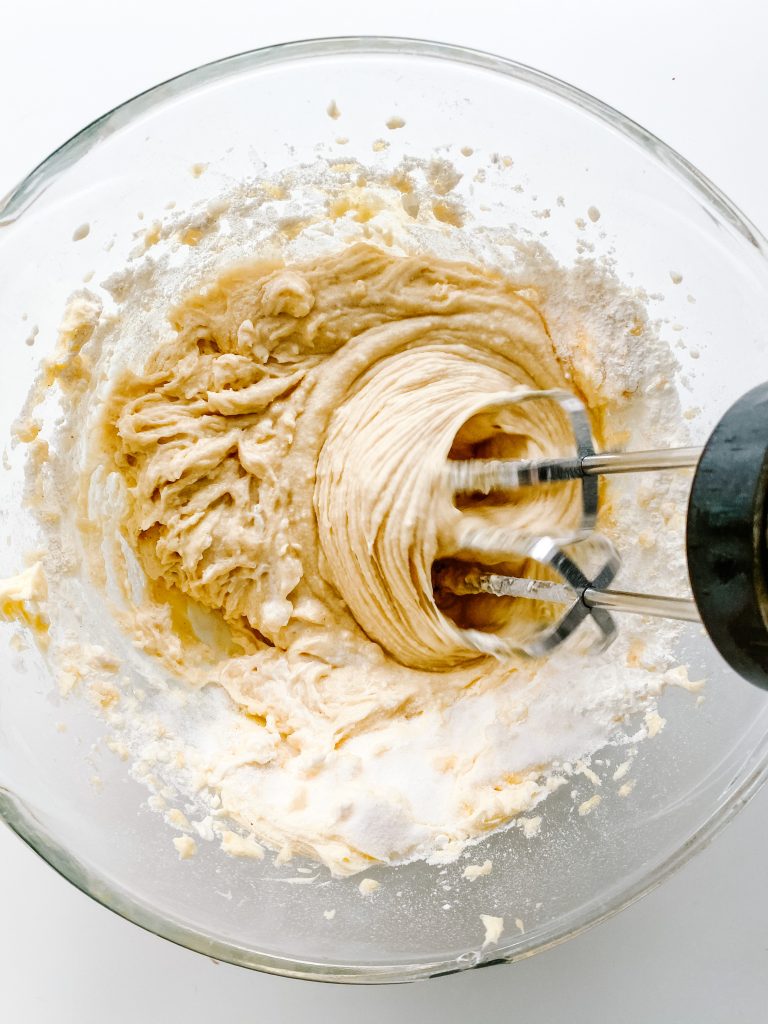
5 Beat to combine 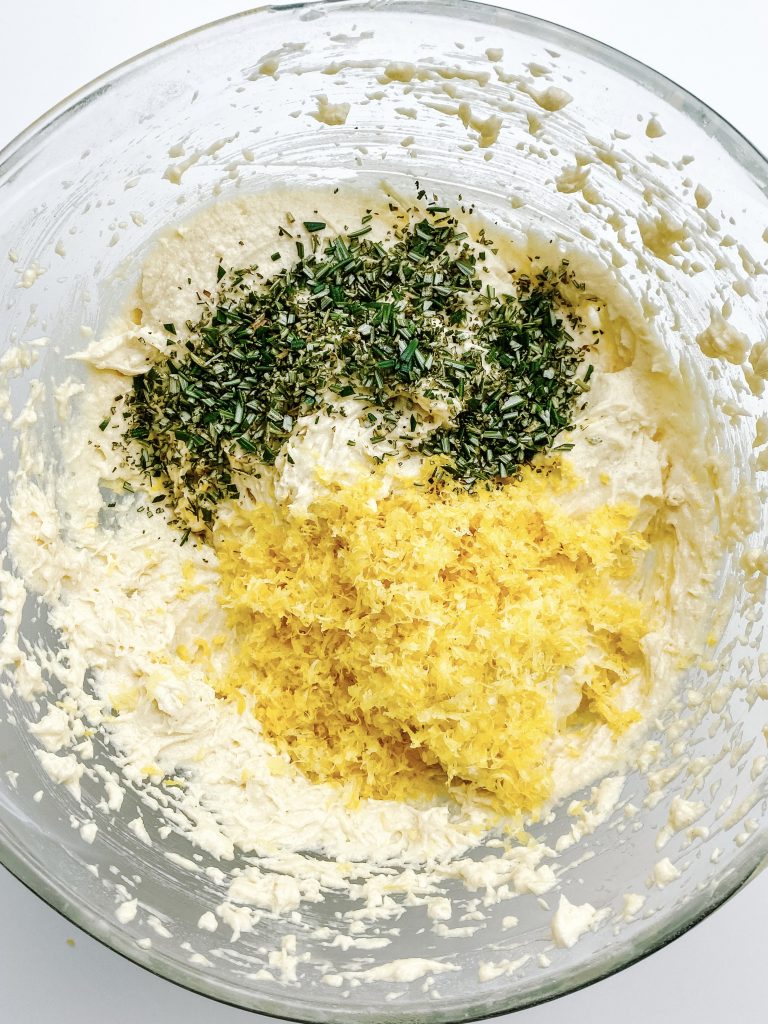
6 Add rosemary and lemon … 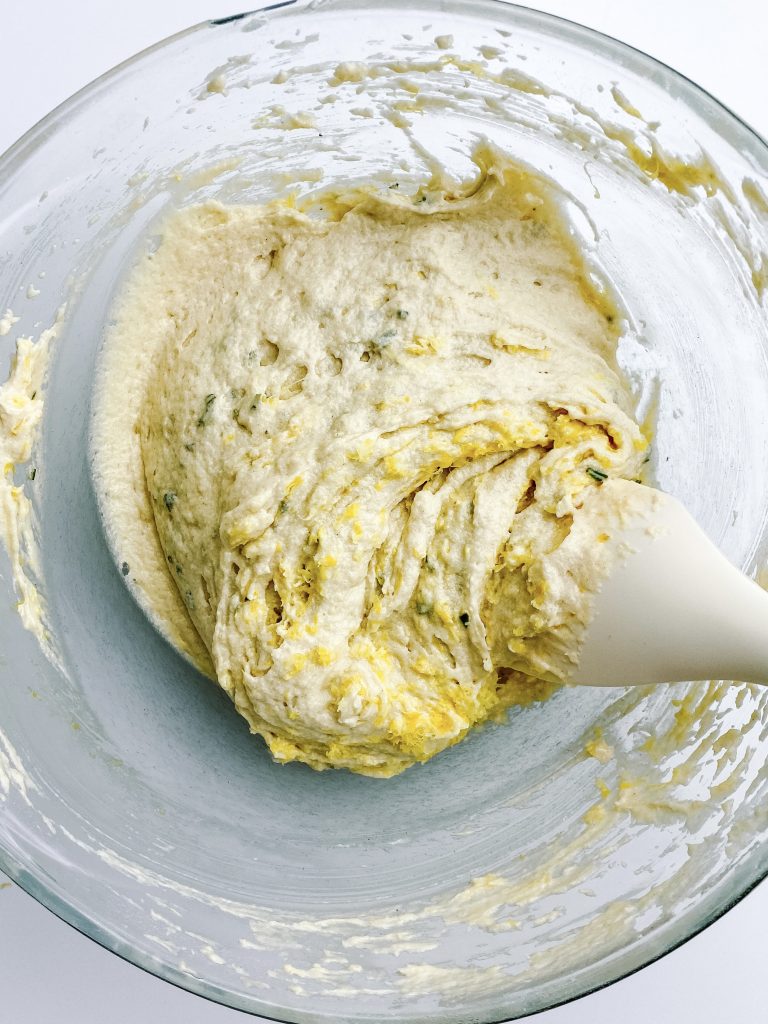
… and fold in 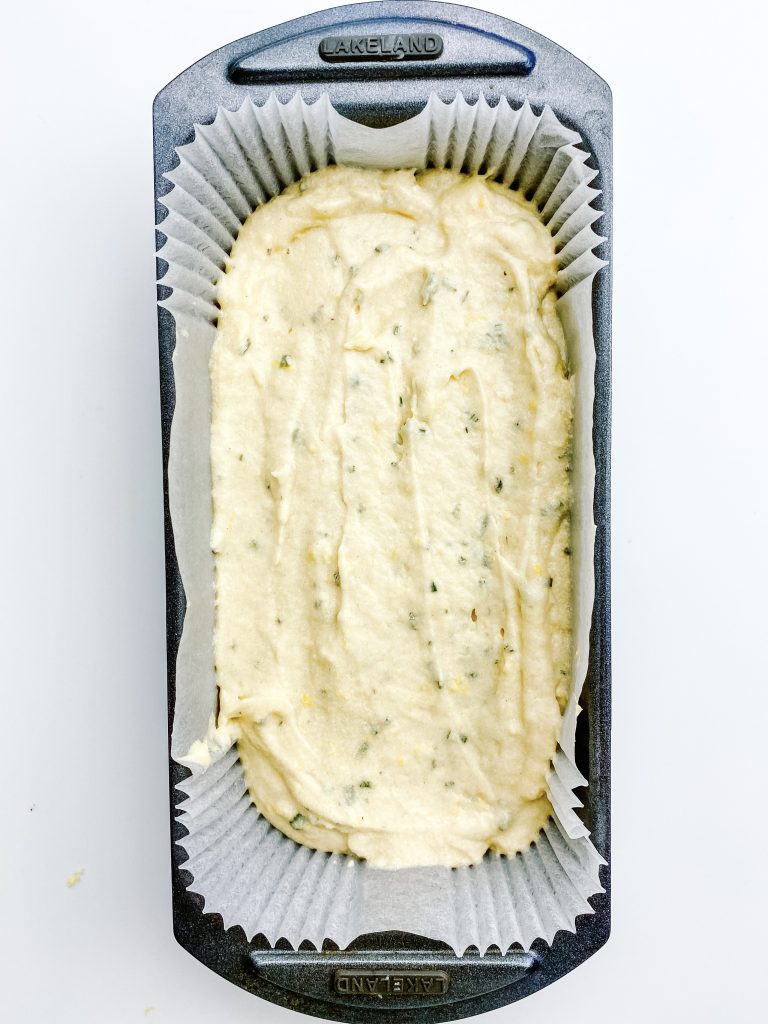
7 Tip into lined baking tin & level 
8 Bake
While the cake is baking, make the soaking syrup:
- Whilst the cake is cooking, make the syrup. Heat the water, caster sugar and rosemary in a saucepan over a moderately low heat until the sugar has dissolved. Bash the rosemary with the back of a knife or with a muddle and leave for the flavours to infuse.
- When the cake is cooked strain the syrup through a sieve, push again on the rosemary to extract as much flavour as possible and then add the lemon juice. The syrup is now ready.
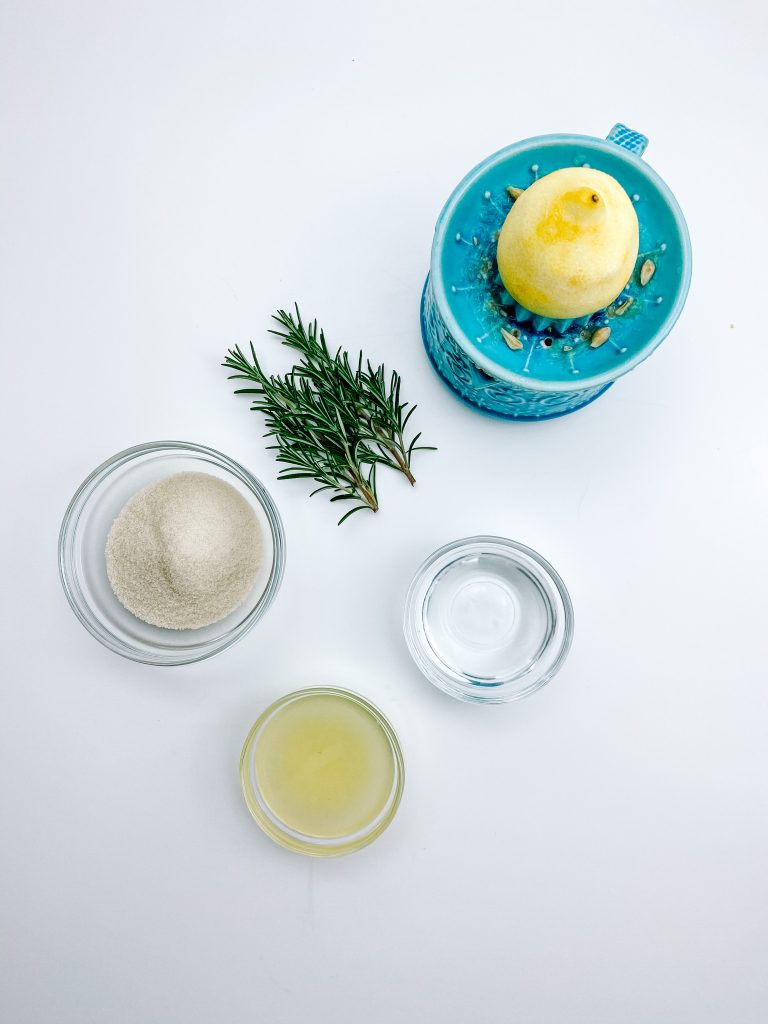
Ingredients 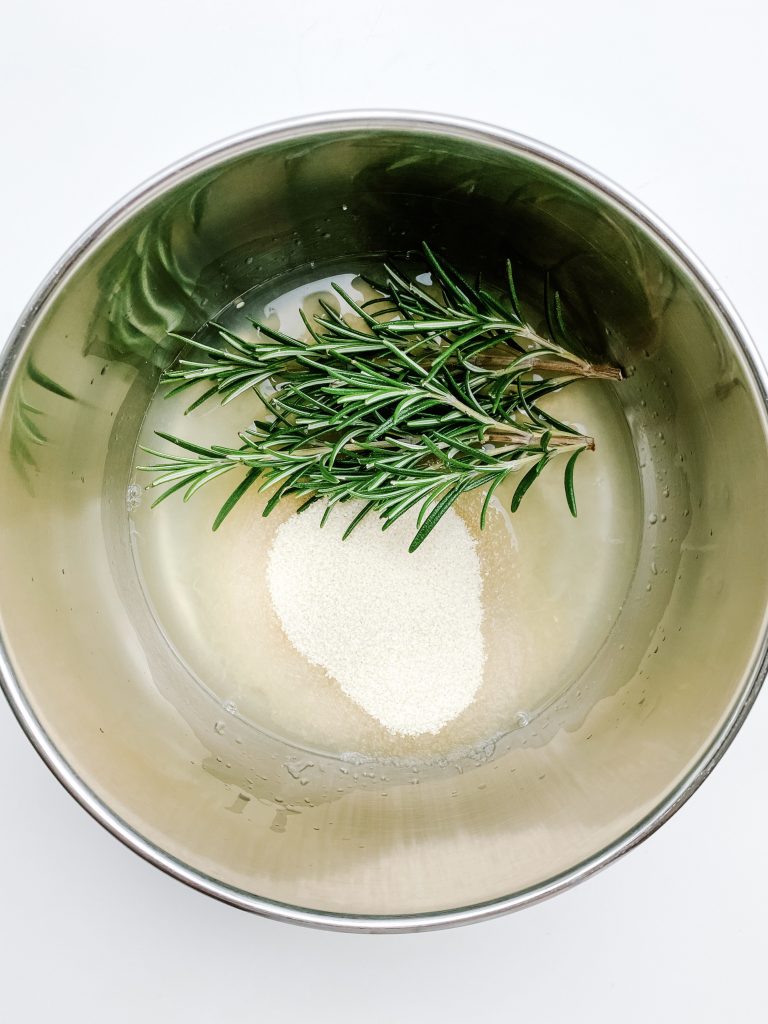
1 Dissolve sugar in water with the rosemary 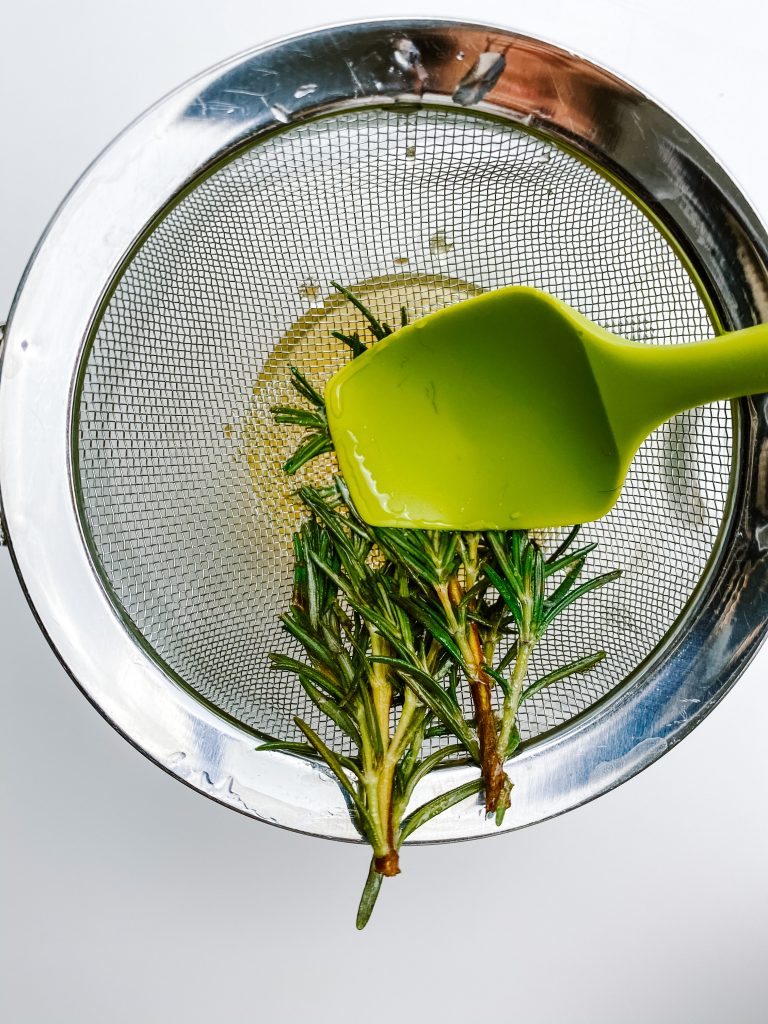
2 Strain
Drizzle the hot, cooked cake with the syrup:
- As soon as the cake comes out of the oven, puncture it all over with a cake tester or skewer.
- Spoon the syrup over the cake, trying to let the middle absorb it as well as the sides.
- Leave it to cool in the tin.
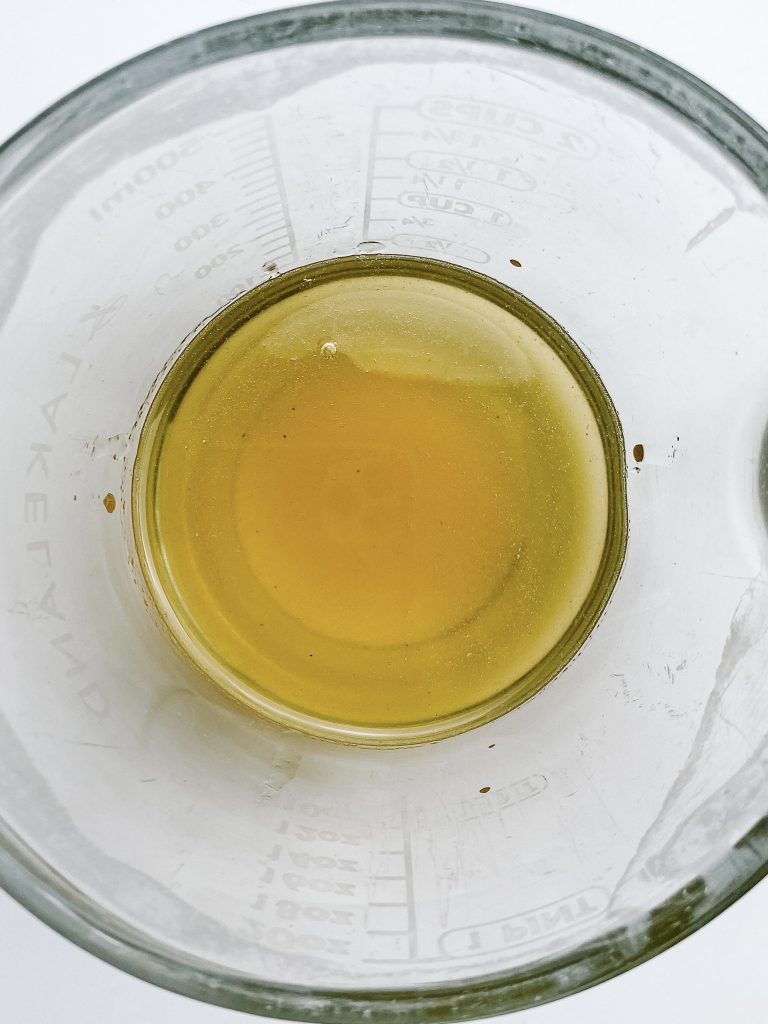
Syrup 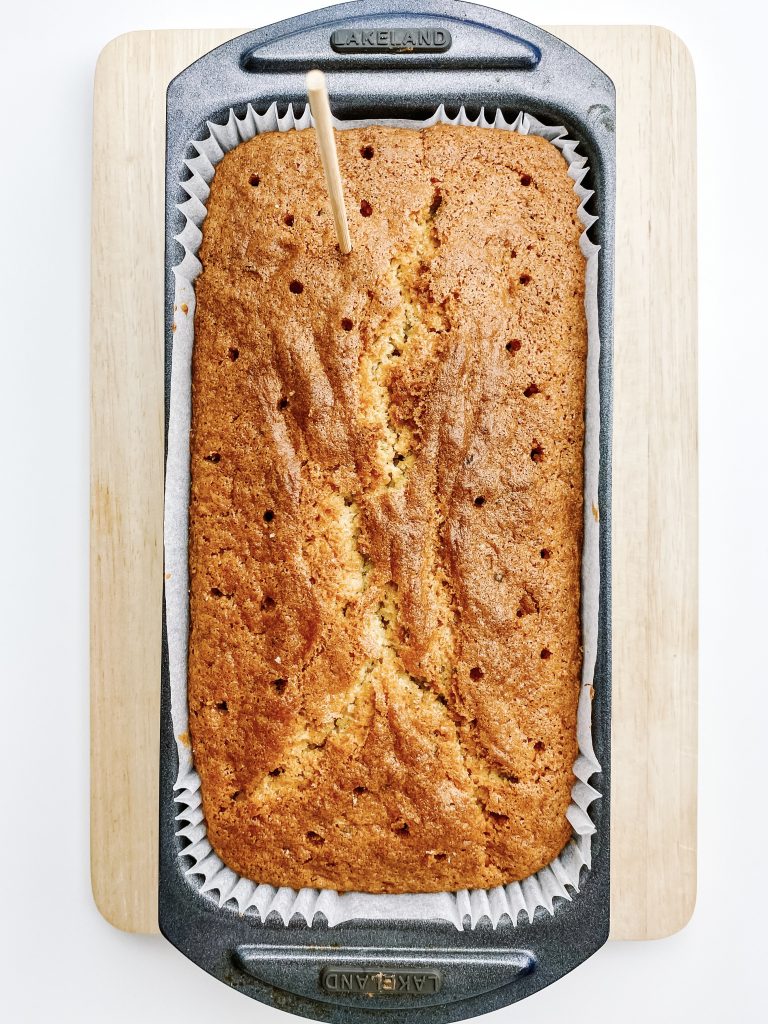
1 Prick with a skewer 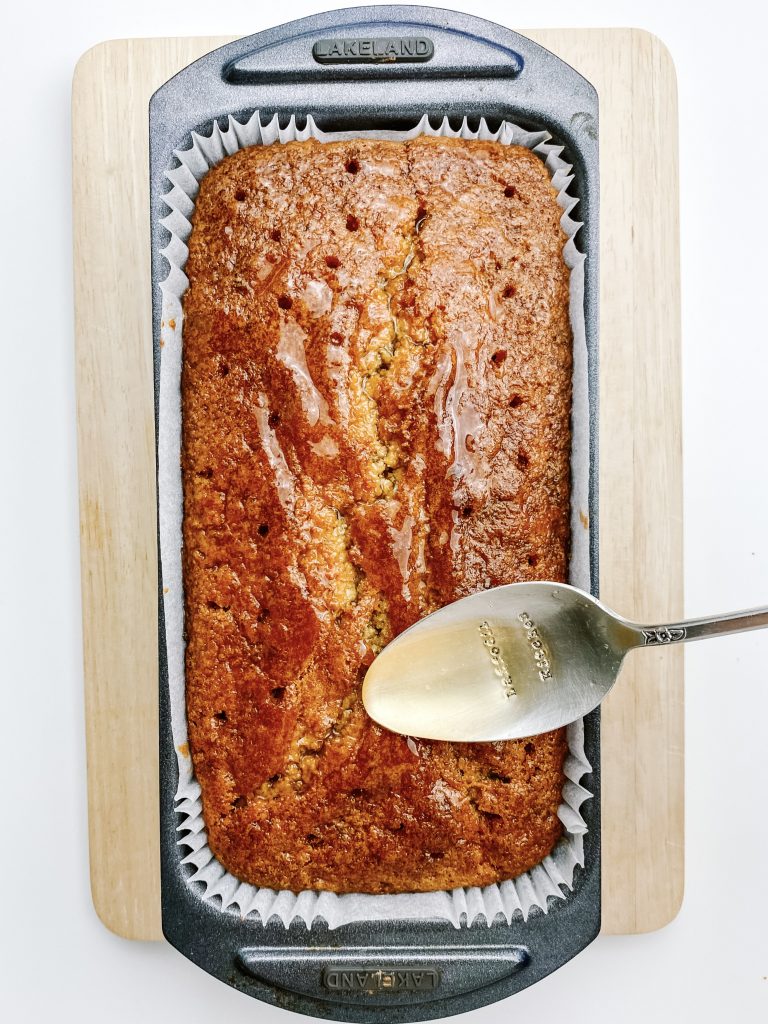
2&3 Spoon over syrup and cool cake in the tin
Sugar coat the rosemary:
I like the toppings on my cakes to give a clue about what type of cake it is. I therefore sprinkle this one with chopped rosemary and lemon zest. I sugar coat the rosemary, but if easier, just sprinkle on a little chopped fresh rosemary.
- Heat the sugar in a small frying pan over a medium heat until it is starting to dissolve. Be careful not to overcook the sugar
- Take off the heat, immediately add the chopped rosemary and stir well. It will clump together. (Adding just before all the sugar has dissolved, should help prevent any over-cooking plus the mixture of dissolved sugar and granules, will have a lovely sweet crunch.
- Tip out onto some baking parchment.
- When cool enough to handle, break into small crunchy pieces to scatter on the cake.
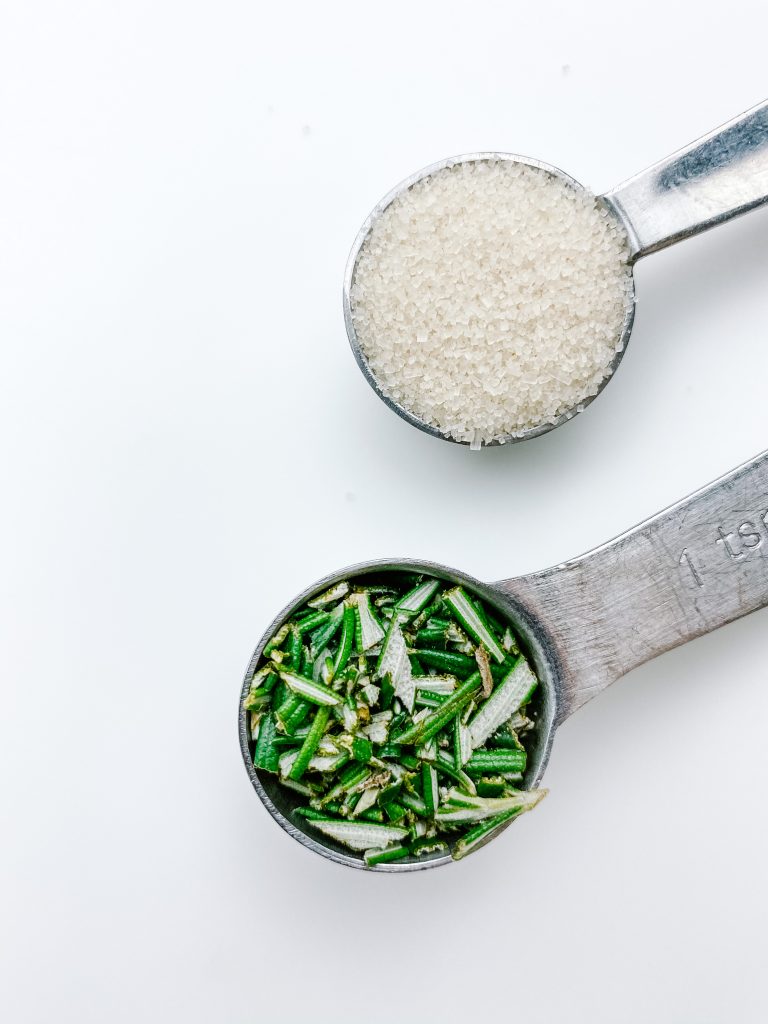
Ingredients 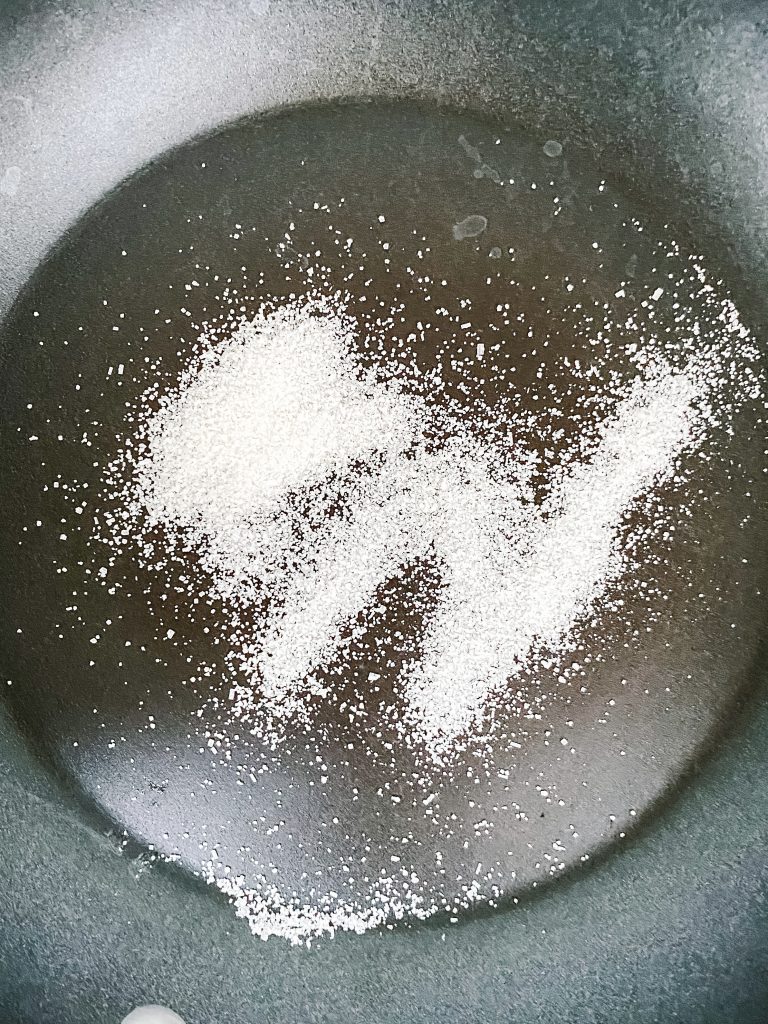
1 Heat sugar.. 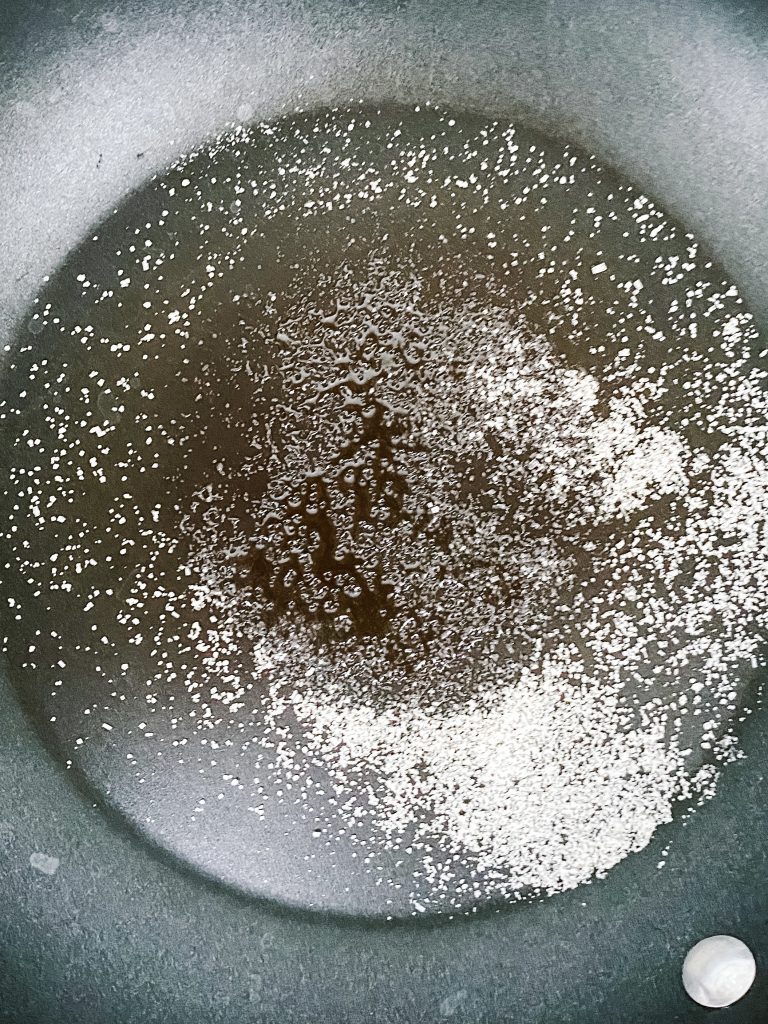
… until it starts to dissolve 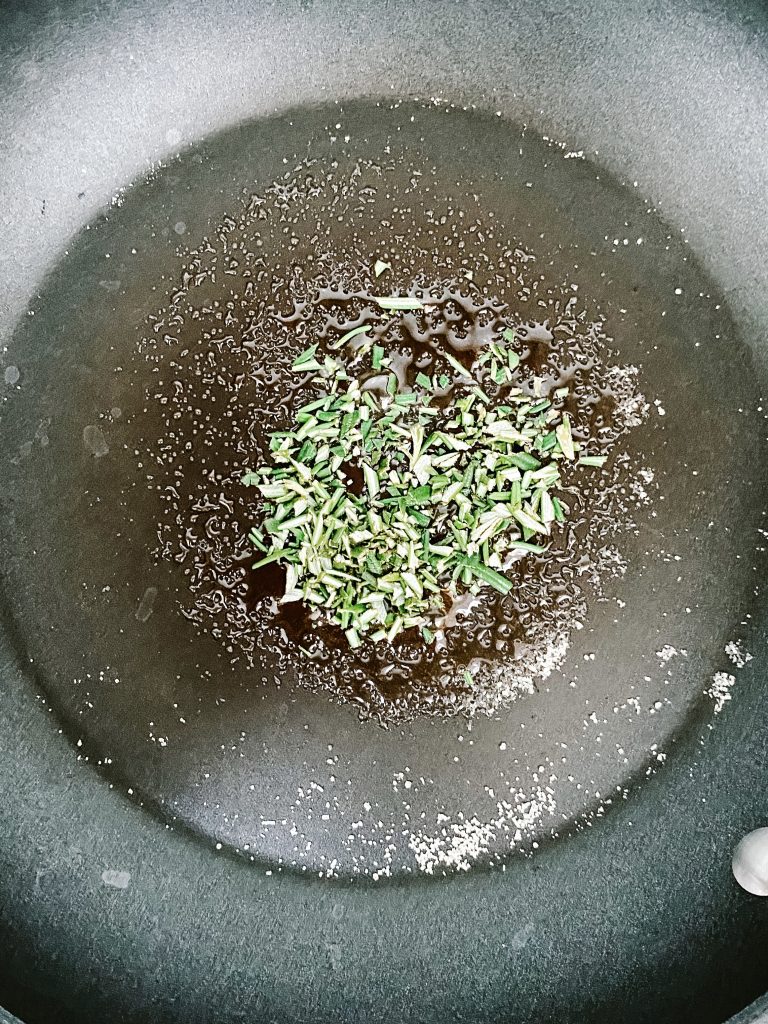
2 Add rosemary and stir 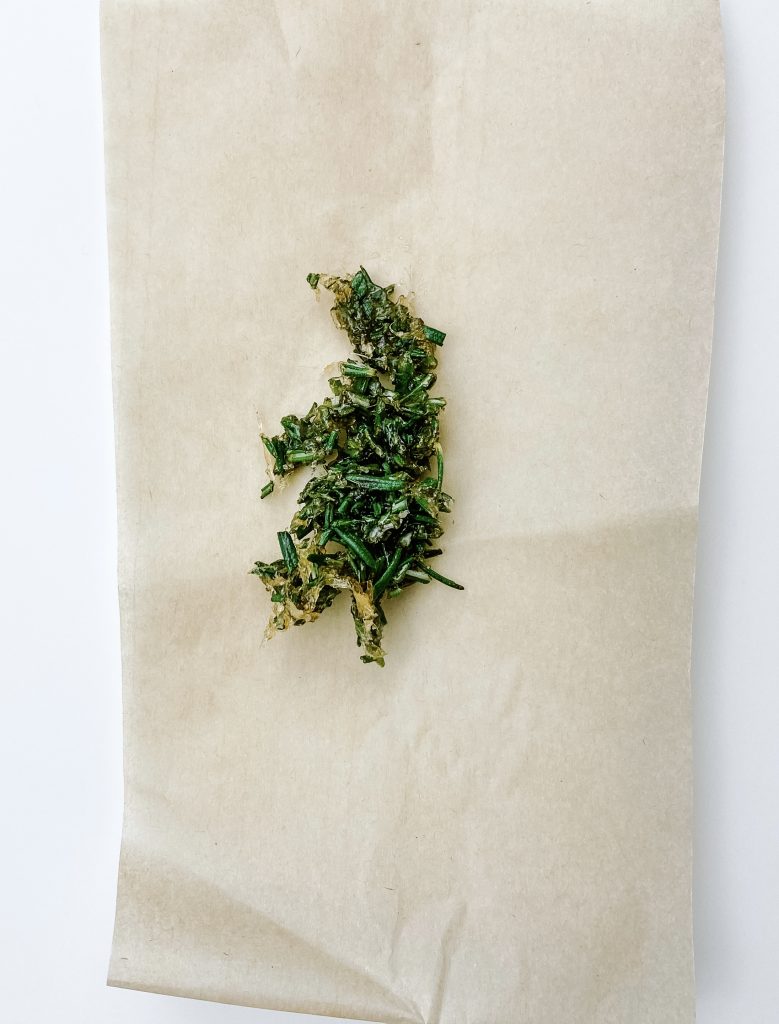
3 Tip out 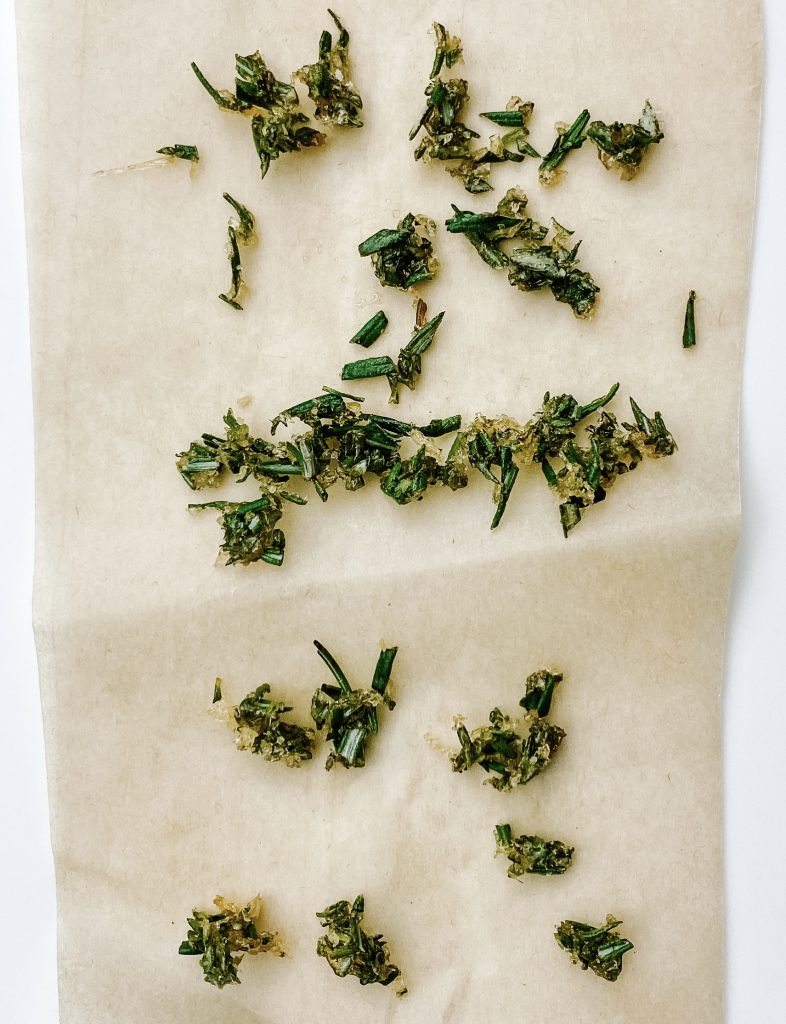
4 Break up into small pieces
Cover with icing:
- When the cake is cool, mix the lemon juice with the icing sugar.
- Use a balloon whisk to mix well, until there are no lumps. It should be a thick pouring consistency. If it is too thick, add a little more lemon juice or water. If too runny, add a little extra sugar.
- Remove the baking parchment from the cooled cake and place it on a rack over a baking tray – this is just to help with easy clean up incase the icing trickles off the cake.
- Pour over the icing, ensuring it covers the top of the cake – you may need to spread it with a knife.
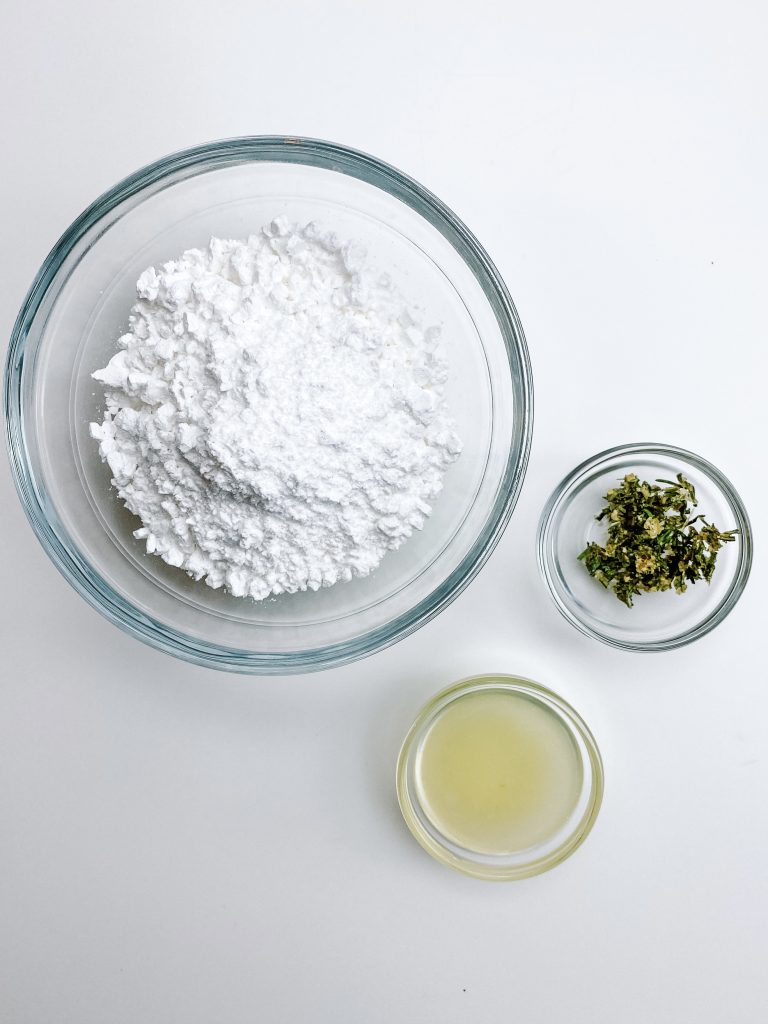
Ingredients 
1 Mix lemon juice and icing sugar 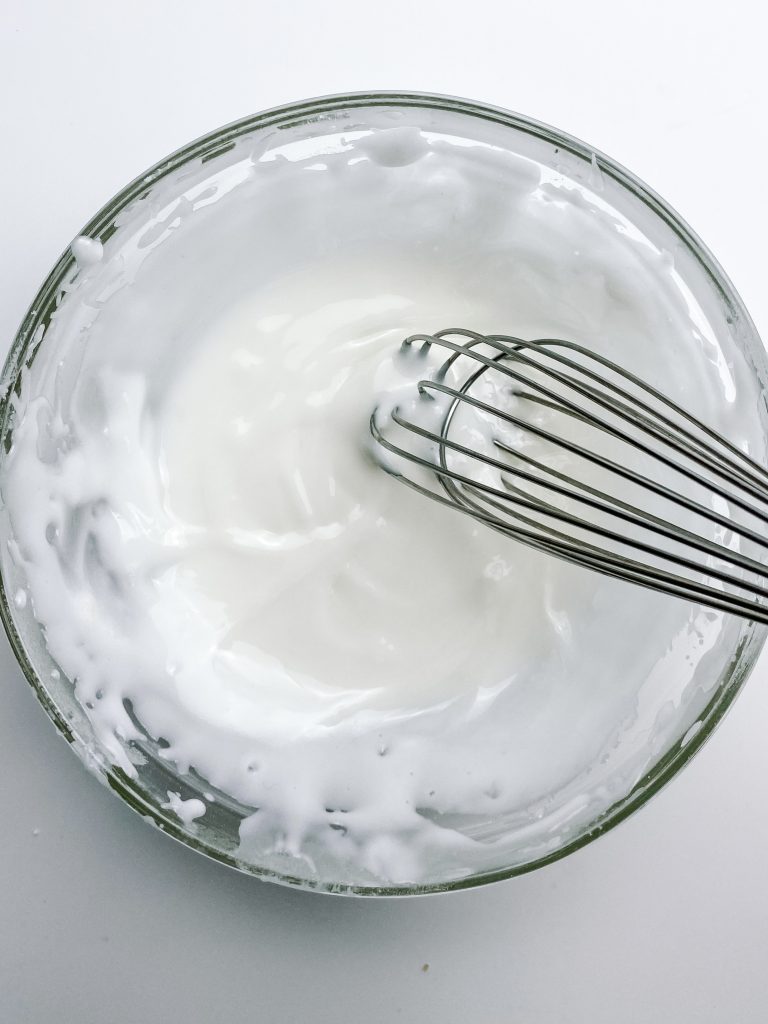
2 Beat thoroughly 
3 &4 Drizzle over the icing … 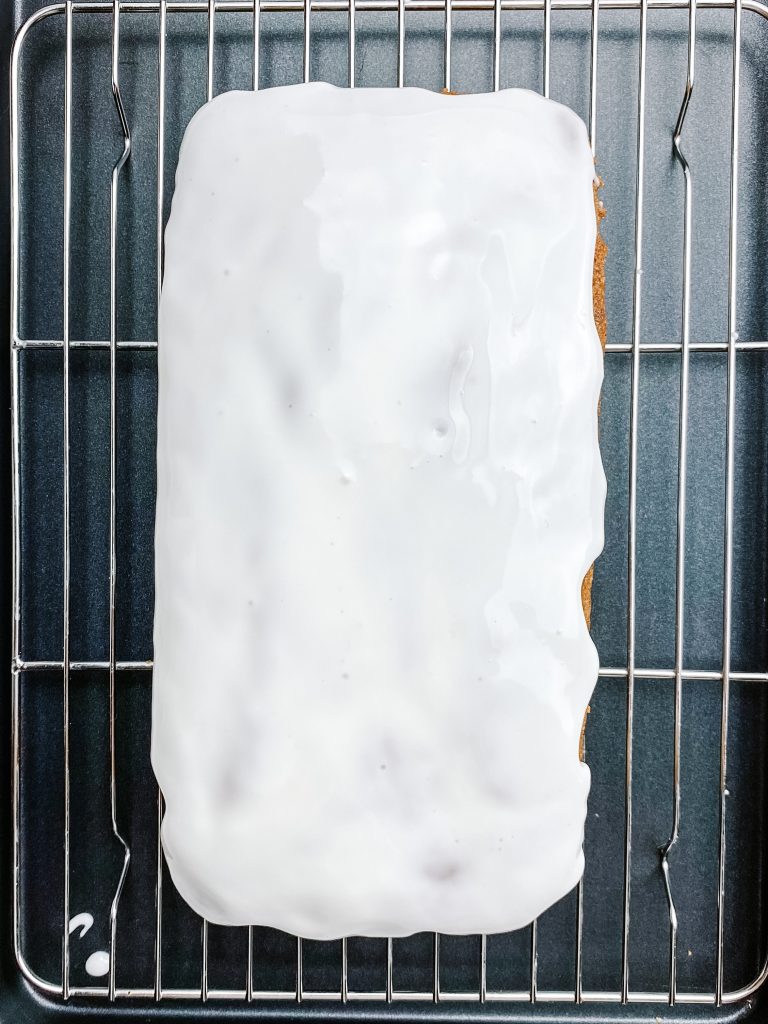
… making sure it covers top of the cake

Made this recipe?
If you make this recipe, do please tag me on instagram @daffodil_kitchen. You could also leave a comment in the box directly below the recipe.
Lemon and Rosemary Drizzle Cake
Delicious, moist, light as a feather, lemon and rosemary sponge cake, drizzled in a lemon and rosemary syrup and topped with a delicious layer of icing.
Ingredients
For the basic cake –
- 130g unsalted butter, at room temperature
- 130g caster sugar
- 2 large eggs
- 160g plain/all-purpose flour
- 20g corn flour
- 1 teaspoon baking powder
- ¼ teaspoon bicarbonate of soda
- 1 teaspoon vanilla extract
- ¼ teaspoon fine salt
- 100g sour cream
Lemon and rosemary flavourings:
- grated zest from 2 medium sized lemons
- 6g/ 3 teaspoons rosemary leaves, finely chopped
For the soaking syrup –
- 45ml/3 tablespoons lemon juice
- 30ml/2 tablespoons water
- 80g caster sugar
- 2 sprigs of rosemary
Sugared Rosemary – (Optional)
- 1 teaspoon finely chopped fresh rosemary
- ½ teaspoon caster sugar
For the icing:
- 100g icing sugar
- 1 tablespoon lemon juice
Decorate:
- sugared rosemary
- grated lemon zest
Instructions
-
Collect together your equipment (see Recipe Notes below) and ingredients.
-
Preheat oven to Fan Oven 160°C/180°C/350°F/Gas 4
-
First make the sponge cake: finely chop the rosemary needles.
-
Use a fine grater to zest both of the lemons.
-
It is important that the butter is at room temperature and soft enough to beat. If it is a little hard, beat it with a whisk before adding the other ingredients. If it is already quite soft, you do not need to do this.
-
Measure all the remaining basic ingredients (everything except the lemon and rosemary) into the mixing bowl with the butter. I place my mixing bowl on top my scales and weigh everything in directly.
-
Use an electric whisk to beat until combined. This should take less than a minute.
-
Add the chopped rosemary and lemon zest and fold into the cake batter. Be careful not to over-mix at this stage.
-
Tip into your lined baking tin and level the surface, ensuring the cake goes into all the corners.
-
Bake in the centre of a preheated oven for 45 – 50 minutes until cooked. It is cooked when:
– the centre feels springy when lightly touched with your finger and no imprint remains
– a toothpick inserted into the centre of the cake comes out clean
– the cake is beginning to come away from the sides of the tin/dish.
-
While the cake is baking, make the soaking syrup: heat the water, caster sugar and rosemary in a saucepan over a moderately low heat until the sugar has dissolved. Stir from time to time.
-
Bash the rosemary with the back of a knife or with a muddle and leave for the flavours to infuse.
-
When the cake is cooked strain the syrup through a sieve, push again on the rosemary to extract as much flavour as possible and then add the lemon juice. The syrup is now ready.
-
Drizzle the hot, cooked cake with the syrup: as soon as the cake comes out of the oven, puncture it all over with a cake tester or skewer.
-
Spoon the syrup over the cake, trying to let the middle absorb it as well as the sides.
-
Leave the cake to cool in the tin.
-
Sugar coat the rosemary: (optional) heat the sugar in a small frying pan over a medium heat until it is starting to dissolve. Be careful not to overcook the sugar
-
Take off the heat, immediately add the chopped rosemary and stir well. It will clump together.
-
Tip out onto some baking parchment. When cool enough to handle, break into small crunchy pieces to scatter on the cake.
-
Cover with icing: when the cake is cool, mix the lemon juice with the icing sugar.
-
Use a balloon whisk to mix well, until there are no lumps. It should be a thick pouring consistency. If it is too thick, add a little more lemon juice or water. If too runny, add a little extra sugar.
-
Remove the baking parchment from the cooled cake and place it on a rack over a baking tray – this is just to help with easy clean up incase the icing trickles off the cake.
-
Pour over the icing, ensuring it covers the top of the cake – you may need to spread it with a knife.
-
Sprinkle the rosemary and finely grate some lemon zest over the icing.
Recipe Notes
Equipment:
- kitchen scales and measuring spoons
- mixing bowl and electric whisk
- 21b loaf tin lined with baking parchment or a loaf tin parchment case
- small saucepan, muddle, sieve and jug or small bowl for the soaking syrup
- mixing bowl for the icing
- small frying pan for the sugared rosemary
You May Also Like
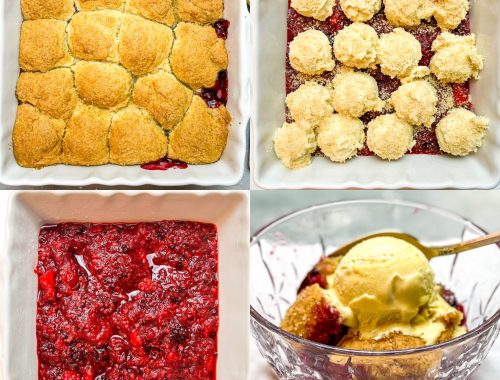
Cobbler – Core Recipe
8th January 2022
Turmeric Pilau Rice
10th October 2020
